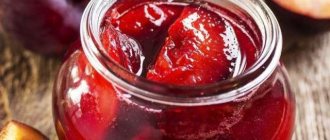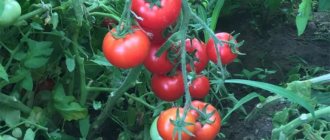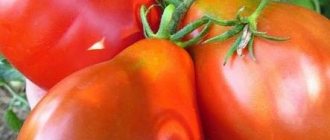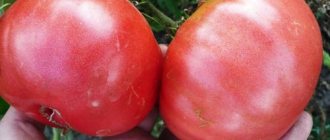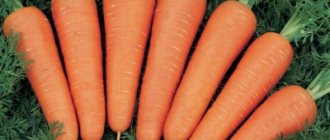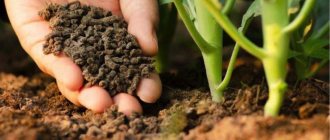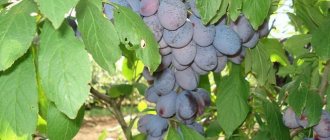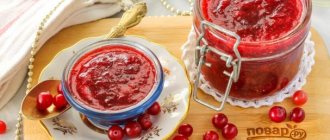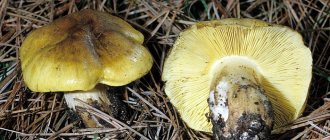From the huge variety of varieties, each farmer chooses those types of crops that suit him more than others. The selection criteria may include taste characteristics, shelf life, yield or growing conditions. Definitely, in order to make the right choice, you need to know all the features of a particular variety. This awareness will help you avoid disappointment when harvesting. Of course, only practice and your own experience will help you select the population of your onion bed. One of the popular options among gardeners today is blue onions.
Description of the variety, what blue onions look like
Several varieties of this plant fall under the definition of “blue onion”. United by a number of similar morpho-physiological characteristics, identical growing conditions and taste qualities, this group includes:
- commissar , large bulbs of a dark purple hue;
- black prince , famous for its high yield, the distinctive feature of which is its blue-black color;
- alvina , an annual variety characterized by good keeping quality, but inferior to other species in yield;
- Danilovsky , a dark blue or purple variety adapted for central Russia.
Danilovsky is considered large.
The price for a package of seeds is 12 rubles. for 5 years All these varieties can be given a generalized description. The color of the flesh of blue onions is reddish-purple and uneven. The upper dry scales are hard, their shade varies from pinkish-violet to blue-black. The bulb sizes are average, up to 150 grams. All varieties are small-nest and have little buds; they bear almost no greenery (and the feathers of blue onions do not differ in taste, they are hard and dry).
For those who want to get greens: plant nigella a little later and very close to each other, then the development of the bulbs will slow down and the feathers will begin to grow. Just don't forget to trim the arrows that appear.
To taste, these are either sweet-spicy or sweet (salad) types. Blue onions are resistant to diseases and pests, which provides them with a long shelf life. In terms of ripening time, blue varieties are mid-season, southern, but they can also be grown in cold northern regions.
What it is
Blue onion is a vegetable crop - one of the varieties of onions. Initially, imported from Spain, the “blue vegetable” was several small bulbs growing together, having a light bluish color, a rich pungent taste, and containing a large amount of essential oils.
With the help of selection, modern scientists have developed new varieties of this root vegetable, while retaining all the beneficial properties, vitamins and minerals. All varieties of this vegetable have different tastes and are used both in world cooking and for medicinal purposes due to their healing properties.
There are many varieties of this root vegetable; they differ from each other in bulb size, yield, planting method and harvest time. Externally, the varieties also differ; they are: round, convex, flattened and elongated.
Medicinal properties - benefits and harm to the body
Blue onions differ significantly in chemical composition from their white counterparts. This ensures both its beneficial properties and taste. Interestingly, the most useful are the outer juicy open scales, so when peeling the vegetable, be careful not to deprive yourself of vitamins. But during heat treatment, all its wonderful properties are preserved.
Blue onions contain a large amount of antioxidants, due to which they have a rejuvenating and anti-cancer effect, trigger tissue regeneration processes and prevent premature cell death. Anthocyanins found in bulbs help neutralize inflammatory processes. Blue onions have an antihistamine and antiviral effect, which significantly strengthens the body's immune system. Find out about the benefits and harms of white onions at this link.
Be careful with blue onions if you suffer from gastrointestinal ulcers, as this vegetable stimulates the production of digestive enzymes and can stimulate the development of ulcers and gastritis.
This variety will be especially useful for those suffering from diabetes. Low sugar content and an abundance of chromium increase cell sensitivity to insulin and improve the functioning of the body's regulatory systems. The components of blue onions also have a beneficial effect on the digestive system, restoring normal metabolic rhythms (treatment of the gastrointestinal tract). The sulfur compounds contained in such onions stimulate the production of amino acids that cleanse the body of toxins and prevent the accumulation of cholesterol.
How else to protect your liver?
And do not forget that the liver is a very important organ that needs to be taken care of. It is useless to engage in treatment if you do not give up bad habits that could have caused the disease.
It is very important to give up a number of foods that harm it:
- Fatty food . Such food is not healthy for a completely healthy person. Firstly, it inhibits the functioning of internal organs, and secondly, it leads to inflammatory processes.
- Alcohol . When drinking alcohol, the liver suffers the most - everyone knows that excessive drinking can cause cirrhosis. But even small doses of alcohol are dangerous.
- Carbonated drinks . According to doctors, the presence of large amounts of sugar and carbohydrates makes such drinks as dangerous as alcohol.
- Red meat . Yes, the protein contained in meat is beneficial. But large amounts of red meat, which contains saturated fats, can slow down the functioning of this organ.
It is also advisable to consume less sweets and salt, which also negatively affect the entire body as a whole.
Reproduction: how it can differ
Most varieties, such as Yalta, Carmen and others, can be grown as both an annual and biennial crop, depending on the climatic and weather conditions of your region. Onion seeds reproduce only in favorable conditions with plenty of light and moisture. The onion shoots an arrow in the second half of the growing season, when the bulbs have already filled and the feathers are dying off.
The blue bow shoots very quickly. If your goal is to harvest bulbs, then when these signs appear, do not hesitate to harvest.
Flowering continues for 2-3 weeks, then a long period of seed ripening begins. It is better to collect the boxes with grains before the first morning dew and keep them in a warm, dry and dark place until they are fully opened. Until the next sowing, store nigella in a cool, dry place, preferably in a fabric bag (in cellophane, the seeds can become damp and moldy). For those who want to get a high yield, it is more acceptable to propagate blue onions with sets or seedlings (for all varieties except Alvina). This will increase both the size of the bulbs when harvested and their resistance to environmental conditions, diseases, and pests. How to grow onions by sowing in the fall before winter, read this article.
Recipes from traditional healers
Cold remedy
To cure the symptoms of colds, juice is squeezed out of onions and mixed until smooth with goose fat or natural honey. Rub this mixture over the chest area before going to bed. After the procedure, it is recommended to lie down under a blanket.
For a quick effect, the honey-onion mixture can be taken internally.
The onion is chopped, the juice is squeezed out, combined with honey, milk and alcohol (1 tablespoon of each ingredient). Bring the mixture to a boil over low heat and cool. Impregnate gauze pads for placement in the sinuses.
For hemorrhoids
When used internally, the honey-onion mixture cures hemorrhoids and is indicated for people with low acidity.
For helminthiasis
Chop the onion, brew with warm water (200 g), and leave for 7 hours. Drink half a glass before meals (4-5 days).
Decoction to restore the menstrual cycle
Take the peel removed from 1 kg of blue onion, brew it with boiled water (500g), and boil for 20 minutes over low heat. Strain and drink 2 tbsp in the morning. before meals (2 weeks).
red pepper - benefits and harm
Growing
Cultivation of blue onions does not differ from the principles of growing other onions. Choose a planting method based on your own capabilities. Remember the quality of planting material and soil for the future garden bed. Blue onions are even more unpretentious than their relatives, but it still won’t hurt anyone to get acquainted with some of the rules for breeding them.
Landing
First of all, remember what region you live in. The timing of planting depends on this factor. In general, blue onions, as a mid-season species, should be planted in the second half of April. For the northern regions, this period is postponed to early to mid-May. Under no circumstances plant onions in soil that is not warmed up enough, otherwise they will go into overdrive in June.
Remember that onions do not like overly acidic soils. It is permissible to neutralize acids only with the help of wood ash; liming before planting onions will harm the plant. Before sowing, thoroughly dry the set or seeds, let them “wake up” after winter (you can warm them up or treat them with a nutrient solution). On the contrary, provide seedlings with good watering for 2-3 days before planting. The soil should be well watered, preferably in two stages: first with hot water for warming and disinfection, and then at room temperature.
Care
Blue onions need careful care only during the first stages of growth. An adult, strong plant is able to cope with all troubles on its own: it does not succumb to insect pests, tolerates drought well, and its thick peel protects the bulbs from mechanical damage. But to get the maximum yield, you still have to work.
Pay great attention to weeding. Weeds create conditions favorable for the growth of bacteria and slow down the growth and development of the bulb. In the first 1.5-2 months after planting, do not deprive the plants of abundant watering. At the same time, introduce the first fertilizing. Potassium nitrate, slurry, tincture of bird droppings, and wood ash diluted with water are excellent fertilizers. How to properly water onions in open ground is described in this material.
Do not use organic fertilizers more than once a month. Be the first to introduce mineral fertilizing with a high nitrogen content and preferably in a dry form - scatter a small amount over the bed before watering.
Remove dying leaves in a timely manner so that the upper scales of the bulb do not begin to rot. A couple of weeks before harvest, stop watering the onion bed to extend the shelf life of the vegetables.
Do not forget to thoroughly dry the dug up bulbs and ensure proper storage conditions.
If weather permits, scatter the onions outdoors to dry. If this is not possible, then it is best to leave it hanging to dry (you can weave the bulbs into a “braid” using the remaining feathers or hang them on a stretched wire).
Onion recipes
Due to its healing properties, blue onions with sugar provide invaluable benefits for treating the liver. Homemade medicine treats:
We recommend reading:
Liver cleansing with folk remedies
- All types of hepatitis, including viral;
- Complications of alcoholic hepatitis - with cirrhosis;
- Removing toxins after medical treatment. For example, taking medications for many weeks in a hospital;
- Protective agent for vascular thrombosis.
A special recipe for preparing onions helps remove not only toxins from liver cells, but also the virus. You can prepare the medicine as follows, it is advisable to follow the recipe. You will need a kilogram of blue or purple onions; under no circumstances use white or another variety. Grind in a meat grinder or blender; if you don’t have it, you can use a regular grater. Add 900 grams of regular sugar to the mixture and mix well. Place the resulting pulp in a dark place for 10 days. After this time, you will need to strain the product through a sieve or gauze, and use the resulting juice as medicine.
Red onion with honey – the healing effect increases hundreds of times
A recipe with an excellent remedy can be simplified and prepared according to a different scheme. Use about a kilogram of red onion and 2 cups of sugar. Turn the onion into a paste, add sugar and put it in the oven at 180 degrees, watching the cooking. As soon as the crust turns golden brown, remove and cool. Squeeze the juice out of the prepared mixture and you can take it.
Use of red onion remedy: Depending on the degree of liver disease, the use of the folk remedy depends. In case of complications of the disease, use the product on the third day, and not after 10, as described in the recipe. To cleanse the liver of toxins, it is enough to take 1-2 tablespoons in the morning before meals and in the evening before bed. For cirrhosis, the amount of medication taken should be increased to 8 spoons per day and taken not 2, but 3 times a day. Liver restoration requires about 4 tbsp. spoons per day. The complication of the disease and the appearance of cirrhosis is not a reason to be upset, but to begin treatment with blue onions. This recipe was repeatedly tested by doctors, in patients with serious severity (the appearance of dropsy) and the course of the disease - the liver was restored after long-term use of the medicine. The course of treatment is at least 2 months; recovery of the liver after damage will take much longer.
We recommend reading:
Cleansing the liver with allochol
conclusions
Regular blue onions are valued primarily for their high content of biologically active chemical components and their benefits for the body (users write on the Internet that prescription honey and onions can have a beneficial effect on the liver, like a medicine. It is also worth reading about the harm from the variety ). You can read about all the beneficial properties of different varieties of onions here. Another advantage is its unpretentiousness and the ability to maintain its presentation for a long time during storage. Each region of the country has its own “subspecies”, its own representative of blue onion, which can look different.
What varieties of red onions are common in Russia is written here.
Using onions for medicinal purposes - how to use them correctly?
There are many types of onions used in cooking. These include the familiar shallot, leek, trampoline, and others, including blue. It is distinguished by a large list of valuable components in its structure and a mild, non-bitter taste.
The composition determines the benefits of onions. It contains:
- Phytoncides.
- Micro- and macroelements (magnesium, calcium, iron, phosphorus, potassium).
- Nitrogenous substances.
- B vitamins.
- Carotene.
- A nicotinic acid.
- Sucrose.
- Glucose
- Fructose.
- Maltose.
It is recommended to consume the vegetable in its unheated form. It is when it is fresh that it does not lose all its valuable effects.
An important human organ is the liver. He is daily exposed to the influence of negative, aggressive factors. The organ is unique in its ability to restore its cells. In folk medicine, blue onion is used to cleanse it of toxins, heal from chronic hepatitis, drug poisoning, for injuries, violations of the integrity of the organ - it can stimulate the regenerative functions of liver cells. Onion included in the medicinal substance can prevent blockage of liver vessels with blood clots, as well as the formation of obstruction. Cirrhosis with dropsy is also within the capabilities of a blue vegetable. The recipe from traditional healers suggests using a healing composition of onions and granulated sugar. This home remedy can prevent excessive accumulation of glucose and remove viruses from liver cells. It is an effective anthelmintic substance that expels worms from the liver ducts and tissues.
Important!
Blue onions are sometimes called red or purple. This is the same plant, and differs only in name, therefore, the application and preparation methods are identical.
broccoli - benefits and harms
Onions and liver - afterword
Any type of onion - white, blue, leek, shallot and so on - has remarkable medicinal and nutritional qualities. You can and even need to eat it.
But liver diseases tend to quickly develop into a chronic stage of the process, ending in the development of liver failure. This condition can only be treated in a hospital setting in the intensive care unit and can be fatal.
Therefore, you should not look for money, healers and unreliable folk recipes for treating the liver. Consult a doctor, get examined and follow all prescriptions and recommendations. And coordinate any traditional methods with a specialist, because only the doctor bears full responsibility for the life and health of the patient. Still, you have only one liver and the normal functioning of other organs depends on it, so treat it with due trepidation and respect.
Composition and calorie content
Onions contain two active phytochemicals: allium and allyl disulfide. After entering the body, these substances are converted into allicin, which, according to a number of studies, has antitumor activity [1].
In addition, allicin has a positive effect on the condition of blood vessels, making their walls less rigid, which allows you to correct blood pressure, lowering it. These positive properties are found in yellow onions, shallots and leeks.
Calories 39 kcal
- Fat:
0.2 g - Proteins:
1.4 g - Carbohydrates:
10.4 g - Water:
87.0 g - Ash:
1.0 g - Fiber:
3.0 g
Flavonols are most abundant in onions and are present as their glycosides, i.e. quercetin and kaempferol, in higher concentrations (28–40 mg/100 g) than in other vegetables (e.g. 10 mg/100 g in broccoli, 5 mg/ 100 g per apple).
| Vitamins | Quantity | % RDN |
| Quercetin | Fresh: 28-40 mg | 16% |
| Cake: 60 mg | 24% | |
| Vitamin C (ascorbic acid) | 8-10 mg | 11% |
| Vitamin B9 (folic acid) | 24-53 mcg | 9% |
| Vitamin B6 (pyridoxine) | 0.131-0.214 mg | 6% |
Heat treatment of onions does not affect the quercetin content in it. When cooked, it simply passes from the vegetable into the broth.
| Minerals (per 100 g): | Quantity | %RDN |
| Rubidium | 476 mcg | 476% |
| Bor | 200 mcg | 286% |
| Cobalt | 5 mcg | 50% |
| Silicon | 5 mg | 17% |
It should be noted that red onion is the leader in anthocyanin content (25 mg/100 g), but yellow onion is richest in chemical composition.
Other important connections:
- Purines
— 4 mg (3% of the RDA)
- Oxalic acid
— 3 mg (0.8% of RDA)
Full chemical composition ➤
Which onion is better to eat - raw or boiled?
Eating raw onions allows you to saturate the body with sulfur, and boiled onions – with copper and fiber. Plant fiber is necessary for the proper functioning of the digestive system, and copper is an essential element for the brain.
Surprisingly, even after pickling, onions retain their beneficial properties. However, you need to choose it correctly, having carefully studied the composition, since many manufacturers add harmful components to marinades.
To get the maximum benefit from a vegetable, you need to peel off the top layer from it sparingly, since it contains the most flavonoids.
History of onions
Many ancient populations believed that eating onions helped treat diseases and should be part of a healing diet. Records show that onions have been used throughout the world as a valuable medicinal and food source for thousands of years. Although there is no conclusive evidence as to where it first appeared, there is evidence showing that this vegetable was used more than 5,000 years ago in parts of Iran and West Pakistan.
Onions may be one of the earliest crops to be grown because they were less perishable than other foods of the time. It was popular because it transported well, was easy to grow year-round, and grew well in a variety of climates and soil types. Onions could also be dried and preserved, making them a valuable source of nutrients during times of famine.
Some records show that onions grew in parts of China, India and Egypt around 3500 BC. In Egypt, the bow was even considered an object of worship and symbolized eternity due to its ring-shaped structure. Images of onions can even be found on the interior walls of ancient Egyptian pyramids and tombs! Onions were also consumed by the Israelites and were mentioned as one of the biblical foods, along with cucumbers, melons, leeks and garlic.
Currently, the largest onion producers in the world are China, India and the USA.
